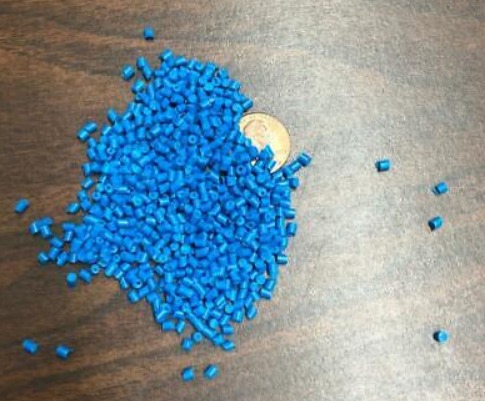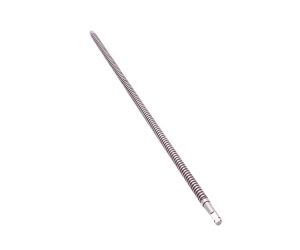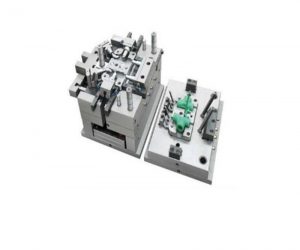The following text explores the multifaceted intricacies of polypropylene pellet utilization within the demanding landscape of injection molding, venturing beyond superficial observations to illuminate the subtle nuances that dictate successful outcomes. We will dissect the material's inherent properties, analyze its suitability for this specific processing technique, and ultimately unravel the reasons underpinning its widespread industrial dominance. This is not a mere recitation of facts; it is a critical examination of a complex interplay of material science, engineering principles, and economic considerations.
Initially, we shall embark on a rigorous examination of polypropylene itself, transcending simple descriptions of its physical and chemical attributes to delve into its molecular architecture and its consequent impact on macroscopic behavior. The thermoplastic nature of polypropylene, while seemingly straightforward, presents a rich tapestry of viscoelastic responses that significantly influence its processability and ultimate product characteristics. We will explore the subtle variations in its crystalline structure, the influence of molecular weight distribution, and the impact of additives on its performance profile, extending beyond the commonly cited "strength, hardness, and heat resistance."
Subsequently, we will dissect the injection molding process as it pertains to polypropylene, moving beyond a simplistic procedural overview. The selection of appropriate pellet size is not a trivial matter; it is a critical parameter influencing melt flow, homogeneity, and the final product's dimensional accuracy. We will analyze the intricate interplay of temperature gradients within the mold, the influence of injection pressure on molecular orientation, and the subtle effects of back pressure on material degradation. This section will not shy away from the complexities of melt rheology and its profound impact on the final product's structural integrity.
The purported "advantages" of polypropylene in injection molding will be subjected to rigorous scrutiny. While cost-effectiveness is a significant factor, we will examine its limitations, exploring potential trade-offs between cost and performance, and identifying scenarios where alternative materials might prove superior. The discussion will extend beyond simple assertions of "high-quality, durable products" to a detailed analysis of specific applications, highlighting where polypropylene excels and where its shortcomings necessitate careful consideration.
Finally, we will transcend the generic advantages often associated with plastic granules, moving beyond superficial claims of "improved production efficiency" and "reduced production costs." We will examine the granular properties themselves – size distribution, flowability, and moisture content – and their impact on process parameters and final product quality. The presentation of "successful cases" will not be anecdotal; it will involve a rigorous analysis of specific case studies, meticulously detailing the challenges encountered, the solutions implemented, and the quantifiable improvements achieved, providing a framework for informed decision-making in the field.
Introducción
Injection molding’s world is all about flexibility and speed, and polypropylene takes center stage. Today, let’s dive into why polypropylene pellets are a go-to for this tech, looking at their uses, what makes them ace, and the process itself. We’ll see why polypropylene rocks for injection molding tasks, uncovering its top qualities that make it a star player in the field.
Understanding Polypropylene for Injection Molding
2.1 What is Polypropylene?
Polypropylene is a versatile thermoplastic polymer that’s a top choice in injection molding because of its standout features. This lightweight material can handle harsh chemicals without breaking down, boasts impressive impact resistance, and maintains its shape really well. Plus, it’s got great tensile strength, meaning it holds up strong under pressure. So, whether you need something tough or structurally sound, polypropylene has got you covered.
Polypropylene, or PP for short, is a type of plastic that’s made by turning propylene—a gas from cracking petroleum—into polymers. It’s part of the polyolefin family and has some cool features like being tough, flexible, light, and heat-resistant. PP can be shaped into lots of different products like bottles, containers, toys, furniture, and even fibers. Its chemical makeup is (C3H6)n, and it melts at around 170 degrees Celsius or 340 degrees Fahrenheit.
2.2 Advantages of Polypropylene for Injection Molding
Polypropylene possesses several advantages that make it an attractive choice for injection molding projects. These advantages include:
- Versatility: Polypropylene can be easily molded into complex shapes, allowing for intricate designs and customization.
- Cost-Effectiveness: Polypropylene pellets are relatively inexpensive, making them a cost-effective option for large-scale production.
- Chemical Resistance: Polypropylene exhibits excellent resistance to chemicals, making it suitable for applications in corrosive environments.
- Lightweight: Polypropylene is a lightweight material, contributing to reduced weight in finished products, particularly relevant in industries like automotive and aerospace.
The Injection Molding Process with Polypropylene Pellets
3.1 Preparing Polypropylene Pellets
The injection molding process begins with preparing polypropylene pellets for injection. The pellets are typically produced through a polymerization process and are available in various grades, each tailored to specific application requirements. Before injection, the pellets are dried to eliminate any moisture that could affect the quality of the final product.
3.2 Injection Molding Techniques
Injection molding involves melting the polypropylene pellets and injecting the molten material into a mold cavity under high pressure. The molten plastic fills the mold and solidifies to take the shape of the cavity. Once cooled, the mold is opened, and the finished part is ejected. Injection molding offers high precision, repeatability, and scalability, making it suitable for large-scale production.
3.3 Considerations for Successful Injection Molding with Polypropylene
To achieve successful injection molding with polypropylene, several considerations should be taken into account. These include:
- Temperature Control: Proper temperature control is essential during the injection molding process to ensure consistent melting and flow of the polypropylene. Different grades of polypropylene may require specific temperature ranges for optimal performance.
- Injection Speed and Pressure: Controlling the injection speed and pressure helps ensure proper filling of the mold and avoids issues such as air traps or voids in the finished part.
- Cooling and Cycle Time: Efficient cooling is crucial to solidify the molten polypropylene and shorten the cycle time. Optimizing the cooling process can improve productivity and minimize part defects.
polypropylene injection molding applications,
4.1 Automotive Applications: A Paradigm Shift in Material Selection
The automotive industry's adoption of polypropylene injection molding transcends mere cost-effectiveness. It represents a strategic shift towards lightweighting, a critical factor in improving fuel efficiency and reducing emissions under increasingly stringent regulatory pressures. While the use in interior components (dashboards, door panels, seat structures) remains prevalent, the material's inherent properties are driving innovation in more demanding applications. Consider the burgeoning use of polypropylene composites reinforced with carbon fiber or glass fibers for structural components, pushing the boundaries of performance and challenging the dominance of traditional materials like steel y aluminum. The intricate interplay between material science, design optimization, and manufacturing processes necessitates a deeper understanding of polypropylene's rheological behavior under high-pressure injection molding conditions to fully exploit its potential. Furthermore, the ongoing exploration of recycled polypropylene feedstock introduces complexities related to material consistency and the need for robust quality control protocols.
4.2 Consumer Goods: Beyond Functionality, a Design-Driven Material
The application of polypropylene in consumer goods extends far beyond its utilitarian function. Its ability to mimic the aesthetic properties of other, more expensive materials, coupled with its inherent design flexibility, has propelled it to the forefront of product design. The intricate geometries achievable through injection molding allow for the creation of visually appealing, ergonomically sound products. However, this design freedom introduces challenges related to mold design and manufacturing, demanding sophisticated CAD/CAM techniques and precise control over the injection molding process parameters to ensure consistent product quality and dimensional accuracy. Moreover, the increasing consumer demand for sustainable and recyclable products necessitates a critical evaluation of the lifecycle impact of polypropylene-based consumer goods, prompting research into biodegradable alternatives and improved recycling infrastructure.
4.3 Packaging: A Balancing Act Between Performance and Sustainability
Polypropylene's dominance in packaging is predicated on its exceptional barrier properties, lightweight nature, and cost-effectiveness. However, the environmental concerns surrounding plastic waste are forcing a re-evaluation of its role. The industry is grappling with the development of more sustainable packaging solutions, including the incorporation of recycled content, the exploration of bio-based polypropylene alternatives, and the design of packaging for improved recyclability. This necessitates a complex interplay between material science, packaging design, and regulatory compliance, pushing the boundaries of innovation in the packaging industry. Furthermore, the need for enhanced barrier properties to extend shelf life and protect sensitive products requires ongoing research into novel polypropylene formulations and surface treatments.
Conclusion: A Dynamic and Evolving Landscape
Polypropylene injection molding is far from a static technology. The ongoing advancements in material science, manufacturing processes, and environmental regulations are driving a dynamic and evolving landscape. The future of polypropylene's application hinges on the ability to address the challenges posed by sustainability concerns, while simultaneously pushing the boundaries of material performance and design. This necessitates a multidisciplinary approach, integrating expertise from material science, engineering, design, and environmental science to fully realize the potential of this versatile material.
Why is Polypropylene Suitable for Injection Molding?
Polypropylene is suitable for injection molding due to its versatility, cost-effectiveness, and desirable properties such as lightweight nature, chemical resistance, and ability to be molded into complex shapes. These characteristics make it an excellent choice for producing a wide range of plastic parts.
Polypropylene (PP) is a popular thermoplastic material that is well-suited for injection molding due to its unique combination of properties. Injection molding is one of the most common and efficient methods of processing polypropylene. Here are the reasons why polypropylene is suitable for injection molding:
- Excellent Flow Properties: Polypropylene exhibits excellent flow properties during the injection molding process. It has a relatively low melt viscosity, which means it can easily fill complex mold cavities and produce intricate details with high precision. Its good flowability allows for the efficient and consistent molding of intricate shapes and thin-walled parts.
- Low Shrinkage: Polypropylene has relatively low shrinkage rates compared to many other thermoplastics. This low shrinkage helps to maintain the dimensional accuracy and stability of the molded parts, minimizing the risk of warping or distortion during cooling.
- Fast Cycle Times: Polypropylene has a relatively short cooling time, allowing for faster cycle times during injection molding. Faster cycle times increase production efficiency and can result in cost savings for high-volume manufacturing.
- Chemical Resistance: Polypropylene is highly resistant to various chemicals, including acids, alkalis, and organic solvents. This chemical resistance makes it suitable for a wide range of applications in industries such as automotive, chemical processing, and medical.
- Good Impact Resistance: Polypropylene offers good impact strength, making it suitable for applications that require parts to withstand mechanical stresses or impacts.
- Lightweight: Polypropylene is a lightweight material, contributing to the overall weight reduction of components and products. This characteristic is particularly advantageous in industries such as automotive and aerospace, where weight reduction can lead to improved fuel efficiency and performance.
- Cost-Effectiveness: Polypropylene is a cost-effective material, making it an economical choice for injection molding projects, especially for large production runs.
- Food Contact Approval: Polypropylene is approved for food contact by regulatory agencies like the FDA (Food and Drug Administration), making it suitable for applications in the food and beverage industry.
Due to its versatility, chemical resistance, and cost-effectiveness, polypropylene is widely used in a variety of applications, including packaging, automotive components, consumer goods, medical devices, and household products, where injection molding is a preferred manufacturing process.
What Plastic Pellets are Used for Injection Molding?
Polypropylene pellets are commonly used for injection molding. These pellets are produced through a polymerization process and are available in different grades tailored to specific application requirements. The selection of the appropriate grade depends on factors such as desired properties, end-use application, and processing conditions.
Plastic pellets are small, cylindrical or spherical pieces of plastic that are used as raw materials in injection molding. Injection molding is a process of creating plastic products by melting and injecting the plastic pellets into a mold cavity. The mold is then cooled and opened to release the finished product.
There are different types of plastic pellets that are suitable for different applications. Some of the factors that affect the choice of plastic pellets are the cost, the properties, the flowability, and the compatibility with the mold and the product design. Some of the common types of plastic pellets are:
- Commodity resins: These are low-cost and easy-to-process plastics that are used for disposable or mass-produced products, such as packaging, bottles, and containers. Some examples of commodity resins are polyethylene (PE), polypropylene (PP), and polystyrene (PS).
- Engineering resins: These are high-performance and high-cost plastics that are used for durable or industrial products, such as automotive parts, medical devices, and military equipment. They have better mechanical, chemical, and thermal properties than commodity resins. Some examples of engineering resins are acrylonitrile butadiene styrene (ABS), polyethylene terephthalate (PET), and polycarbonate (PC).
Plastic pellets are made from various sources, such as petroleum, natural gas, biomass, or recycled plastics. They can also be mixed with additives or fillers to enhance their properties or appearance. For example, colorants can be added to change the color of the plastic, or glass fibers can be added to increase the strength and stiffness of the plastic.
Plastic pellets are an essential component of injection molding, as they determine the quality and characteristics of the final product. Therefore, it is important to select the right type of plastic pellets for each injection molding project.
Polypropylene's reign in injection molding stems not merely from its versatility, but from a complex interplay of material properties and process dynamics that defy simplistic categorization. These pellets, far from being inert building blocks, represent a microcosm of polymer science, their behavior dictated by molecular weight distribution, tacticity, and the subtle influence of additives – each a variable capable of dramatically altering the final product's characteristics. The seemingly straightforward melting and flow under pressure belies a nuanced rheological response, sensitive to shear rates, temperature gradients, and the often-chaotic interplay of viscous dissipation and heat transfer within the molding machine.
The assertion of "versatility" is an understatement. The spectrum of polypropylene grades available—ranging from highly crystalline homopolymers to amorphous random copolymers and impact-modified blends—opens a Pandora's Box of possibilities. Each grade presents a unique processing window, demanding a precise orchestration of injection parameters to avoid defects ranging from short shots and weld lines to sink marks and warpage. This necessitates a deep understanding of polymer physics, not merely a superficial acquaintance.
The injection molding process itself transcends the simplistic description of "melt, inject, cool, eject." It's a high-stakes dance between pressure, temperature, and time, where the slightest deviation can lead to catastrophic failure. Consider the intricate interplay of melt temperature, injection velocity, holding pressure, and cooling rate – each a lever capable of fine-tuning the final part's density, crystallinity, and residual stresses. Furthermore, the mold itself acts as a complex heat sink, its design a critical determinant of part quality and cycle time. Imperfect mold design, exacerbated by wear and tear, can introduce subtle yet devastating flaws, leading to costly scrap and production delays.
The applications extend far beyond the mundane. Automotive applications demand not only lightweight components but also those capable of withstanding extreme temperatures and rigorous crash tests. Consumer goods require a balance of aesthetics, durability, and cost-effectiveness, often pushing the boundaries of material performance. Packaging, meanwhile, necessitates a delicate balance between barrier properties, processability, and recyclability, a challenge further complicated by increasingly stringent regulatory requirements. In each case, the selection of the appropriate polypropylene grade, coupled with precise process control, is paramount.
the seemingly straightforward use of polypropylene pellets in injection molding masks a reality of considerable complexity. Success hinges on a sophisticated understanding of material science, process engineering, and mold design, demanding not just technical proficiency, but a deep appreciation for the intricate interplay of variables that determine the final product's quality and performance. The seemingly simple pellet is, in reality, a gateway to a world of intricate challenges and rewarding possibilities.


